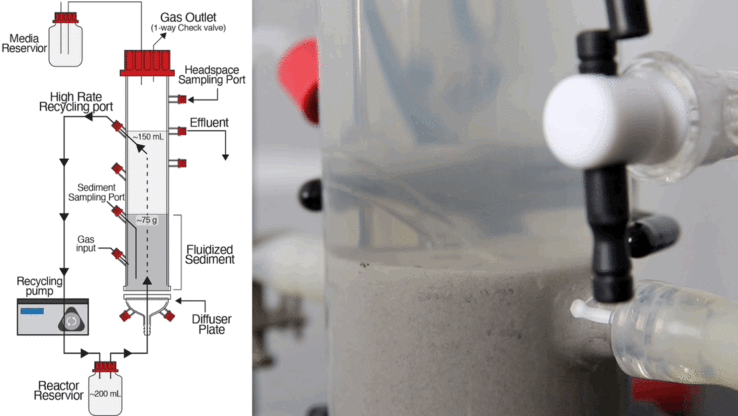Nov. 17, 2014
3 Bullets:
- When an organism duplicates its genes, it increases its ability to adapt and colonize new environments.
- ISB researchers used the systems approach to study how one family of microbial genes evolved to bring functions that were adaptive to specific environments.
- This new understanding of how gene regulatory networks rewire themselves has many potential applications, including how to wire new functions into an organism for biofuel production, bio-remediation or bio-pharmaceutical production.
By Dr. Jake Valenzuela
In a study to better understand how regulatory proteins function in controlling physiological processes, ISB researchers have discovered how one family of microbial genes evolves to increase its ability to adapt to specific environments. This insight about how the gene regulatory network rewires itself has the potential to inform the rewiring of organisms used for biofuel production, bio-remediation or bio-pharmaceutials.
The study, published on Nov.14 in BMC Systems Biology, used a systems perspective to look into the evolutionary processes that allow duplicated transcription factors (TFs), or DNA binding proteins, to adapt to new environmental challenges. TFs push the expression sets of genes up or down based on environmental conditions and interactions. By using the systems approach, ISB researchers were able to assign function and context to TFs not previously understood.
In order to adapt to new environments, organisms can move functions to new contexts by duplicating the regulatory factors that control that process and then allowing the copies to diverge through variation in promoter sequences, DNA binding domains, or effector molecule sensing domains. Researchers studied eight gene duplications of the Feast/Famine/ Regulatory Protein (FFRP) family in Halobacterium salinarum. By studying this TF family, – specifically its DNA binding locations, metabolite affinities and influence on gene expression patterns for 35 different environmental and nutritional conditions – researchers were able to demonstrate variable regulation arising from similar genetic ancestry. Organisms fine-tune their regulatory networks by evolutionarily tweaking the context in which similar regulatory proteins function or operate.
Researchers also developed a new way to integrate protein analysis technologies to discover how specific TFs behave given a specific context. (ISB also has applied this approach to researching the genetic adaptability of M. tuberculosis.) The study shows that these context-dependent regulatory effects have real biological consequences on the fitness of the organism.
This novel approach of integrating evolutionary context with gene regulatory networks greatly increases the possibilities for how organisms can be rewired for industrial applications related to biofuels, bio-remediation and bio-pharmaceuticals.
Title: Evolution of Context Dependent Regulation by Expansion of Feast/Famine Regulatory Proteins
Journal: BMC Systems Biology
Authors: Christopher Plaisier, Fang-Yin Lo, Justin Ashworth, Aaron N. Brooks, Karlyn D. Beer, Amardeep Kaur, Min Pan, David J. Reiss, Marc T. Facciotti, Nitin S. Baliga
Link: biomedcentral.com/1752-0509/8/122/abstract



 isbscience.org/research/how-one-family-of-microbial-genes-rewires-itself-for-new-niches/
isbscience.org/research/how-one-family-of-microbial-genes-rewires-itself-for-new-niches/





